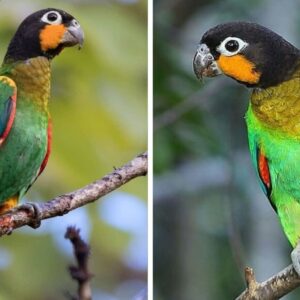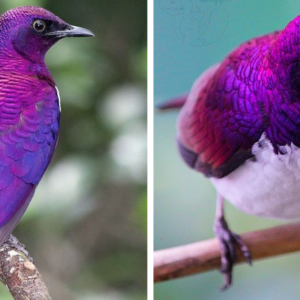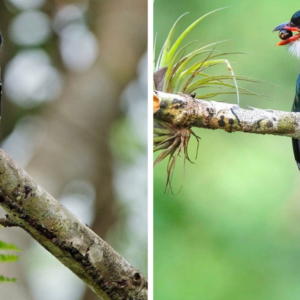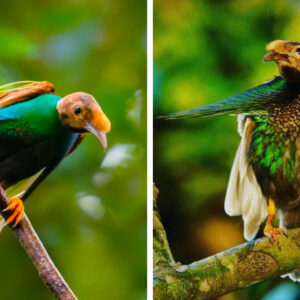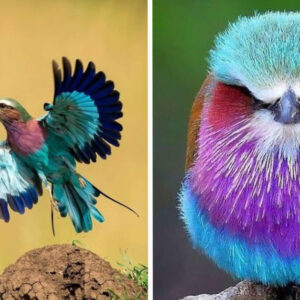A bird often found foraging by creeping along trunks and branches, defying gravity, often upside down
Meet the Velvet-fronted Nuthatch
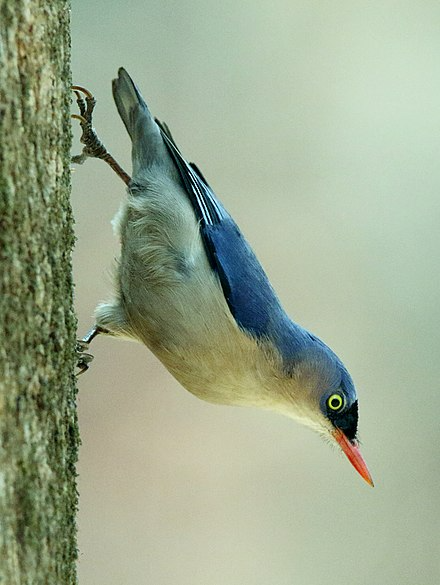

Photo Courtesy of Vimal Rajyaguru / CC BY-SA 4.0
The velvet-fronted nuthatch (Sitta frontalis) measures 12.5 cm (5 inches) in length, weighing in at just between 9 and 17 grams. More than a little colorful, this bird has violet-blue upper parts, with lesser and median upper wing coverts and upper tail area the same color. Underparts are beige, the cheeks lavender while the throat is white. There is black detailing on the primary and outer primaries feathers while the chin, throat, and underparts have white details. The breast, meanwhile, is beige. The flanks, belly, and vent region are a little darker in comparison to the rest of this birds plumage. Other feathers are fringed in violet-blue, grey-blue, or grayish-black while the bright red bill is straight contrasting with a black forehead patch and black superciliary line. (in the male). The crown is violet-blue, the lores black on the male, and the ear coverts are shaded with lavender. Yellow eyes are in turn surrounded by a yellow ring. The legs and feet are mostly black.
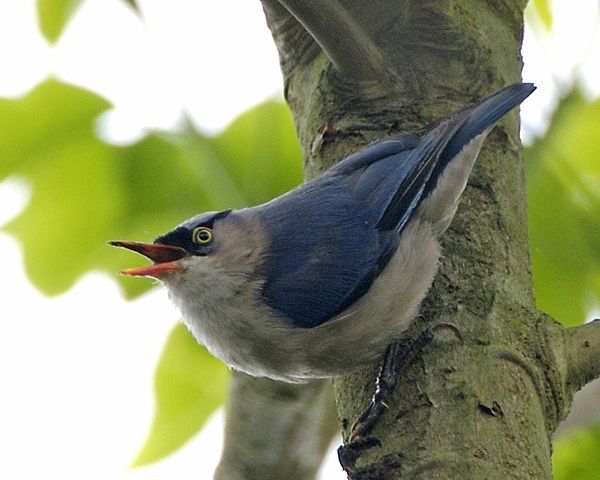

Photo Courtesy of Lip Kee / CC BY-SA 2.0
Female birds look very similar to their male counterparts, but lack the postocular stripe and have deeper colors on their underparts.
Juvenile birds are duller than adults and tend to have blackish eyes.

Photo Courtesy of Godbolemandar / CC BY-SA 4.0
These birds are found in southern Asia from Nepal, into India, Sri Lanka , and Bangladesh east to south China and Indonesia.
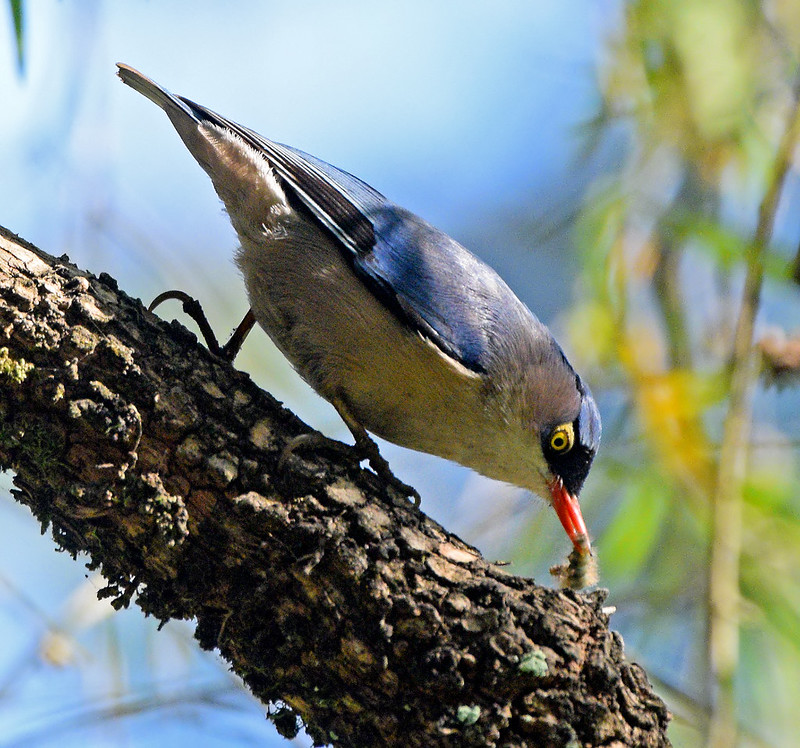

Photo Courtesy of shrikant rao / CC BY-SA 2.0
Velvet-fronted nuthatches prefer to live in evergreen forests such as forest mangroves and mixed wooded areas. This is the only Nuthatch that can be found in tropical lowland forests.
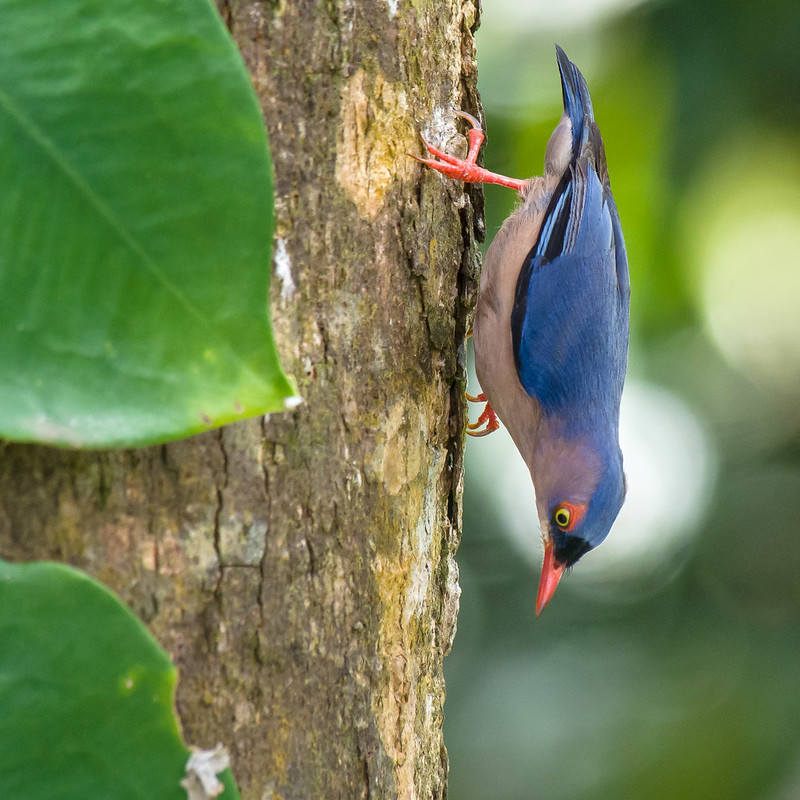

Photo Courtesy of Mike Prince / CC BY 2.0
They like to dine on insects and spiders, but will also take larvae, nuts, and seeds.
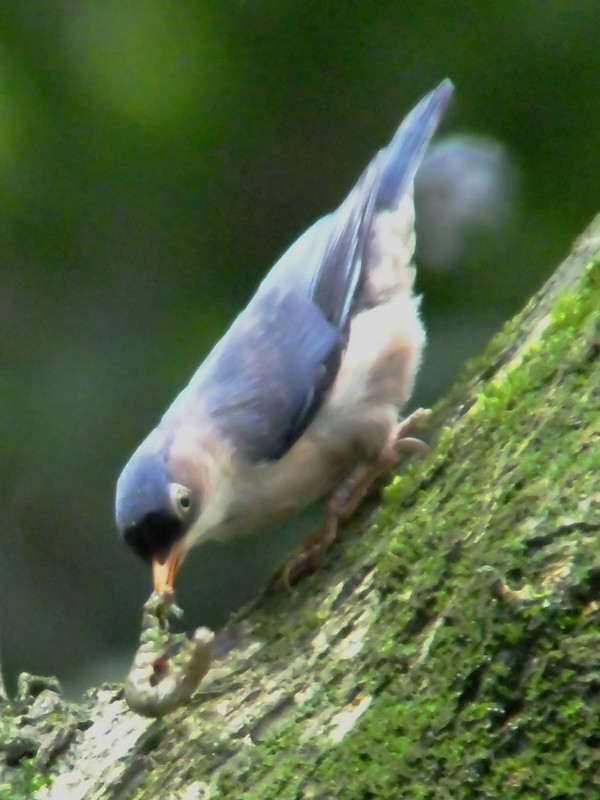

Photo Courtesy of Charles Lam / CC BY-SA 2.0
During the breeding season, the Velvet-fronted nuthatch female builds a nest in a small tree hole or crevice. She lines the interior with moss, fur, feathers, or grass. Although she will occasionally need to enlarge the opening, most of the time she will reduce the size by constructing a tidy mud wall around it. She lays up to six eggs within, speckled with red.
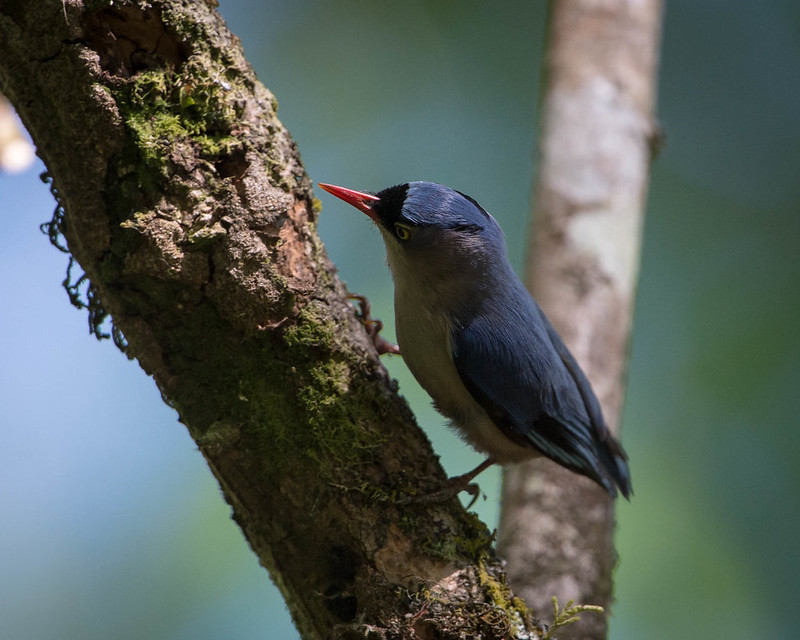

Photo Courtesy of Jason Thompson / CC BY 2.0
Violet-fronted Nuthatch is threatened by habitat loss and deforestation. However, they are usually common in suitable habitats.
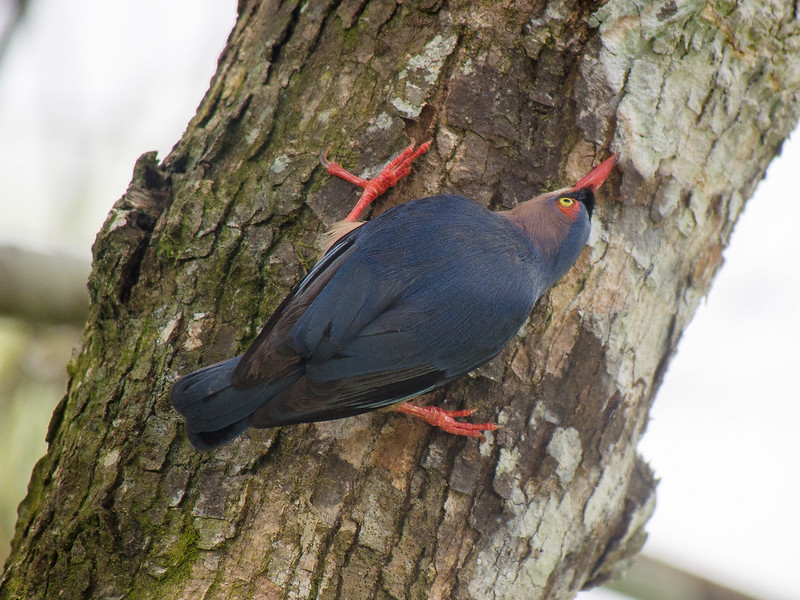

Photo Courtesy of Mike Prince / CC BY 2.0
Though it may be scarce or less abundant in some parts of the range.
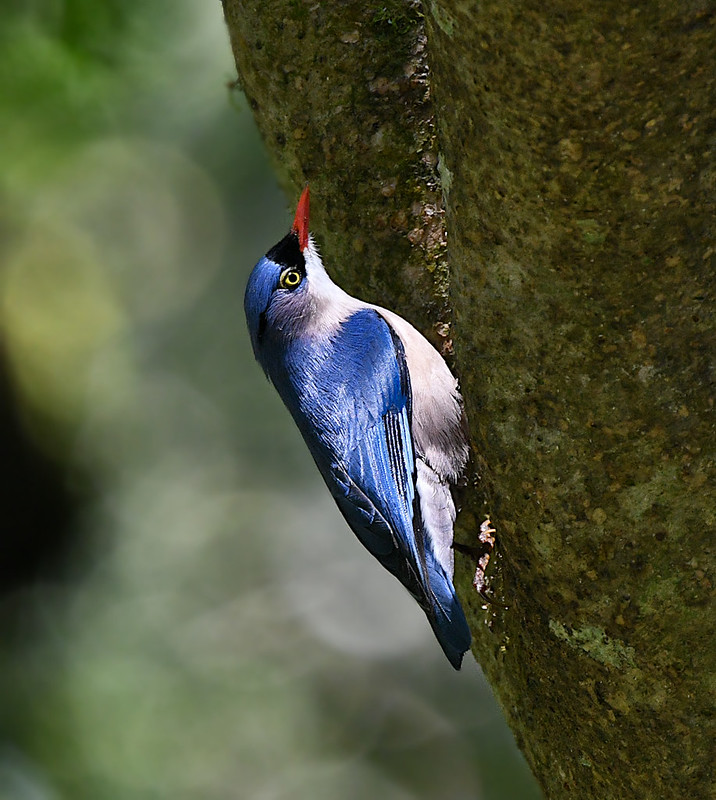

Photo Courtesy of Shrikant Rao / CC BY 2.0
You can watch this bird right here in the video below:
https://youtube.com/watch?v=Q93ubIBfTlk%3Ffeature%3Doembed
